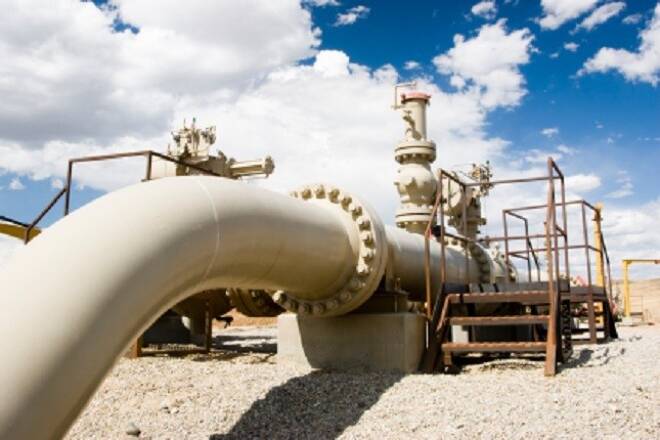Advertisement
Advertisement
Natural Gas Price Fundamental Weekly Forecast – Suppressed Demand Likely to Keep Lid on Prices
By:
Last week’s spike in prices may have been a one-and-done event. This week investors are going to key in on the weather until Thursday’s EIA data is released. The weather will determine if the storage deficit widens or tightens. In order to sustain the rally at this time of year, demand is going to have to outstrip production which is at a record high. This could be difficult because much of the recent demand has been driven by volatility in temperatures offsetting movements in heating and cooling demand.
Early in the week, natural gas traders were content with pushing prices lower in accordance with normal seasonal pressure. This plan was working until the release of the bullish weekly government storage report on Thursday.
Also weighing on prices early in the week was a change in the weather forecast for the first week of October. Prices were driven higher the previous week on the notion that below average temperatures would drive up demand. However, prices retreated when the forecast changed to more seasonal temperatures.
With the government report out of the way, traders are likely to revert back to the weather reports at the start of the new week for guidance.
For the week, November Natural Gas futures settled at $3.008, up $0.034 or +1.14%.
Weekly Government Data
Natural gas futures soared on Thursday following the release of a bullish storage report by the U.S. Energy Information Administration (EIA). For the first time this week, investors set aside concerns over the weather when the surprise government data was released. The response by traders may have been a snapshot of what is to follow this winter when the heating season begins with a supply deficit.
On Thursday, the EIA announced a 41 Bcf injection for the week-ended September 21. This was much lower than the 61 Bcf injection forecast for the week by a consensus of analysts. The figure was also well below the five-year average of 81 Bcf.
The figure was also the lowest injection over the past five weeks and wiped out all of the bearish momentum created by a series of September injections.
Current national gas stocks sit at 2.768 Tcf, down 18.3% from the five-year average of 3.389 Tcf for the same time period, according to EIA data.
Forecast
Last week’s spike in prices may have been a one-and-done event. This week investors are going to key in on the weather until Thursday’s EIA data is released. The weather will determine if the storage deficit widens or tightens.
According to NatGasWeather.com for the period up to and including October 4, “High pressure will dominate the West and Southeast with highs of 80s and 90s, although becoming wet over the Southwest from tropical moisture. A cool front extends from the east-central U.S. to the South with heavy showers. A stronger cool front will push across the Midwest the next few days with lows of 30s and 40s, locally 20s. Much of the U.S. will return above normal this week with highs of 80s to lower 90s over the southern U.S. and 60s to lower 80s across the northern U.S. Cooler exceptions will be near the Canadian border. Overall, demand will be moderate, then low this week.”
Additionally, the National Weather Service calls for a likelihood of temperatures below seasonal norms in the North and the West, while higher-than-average temperatures are expected across the rest of the U.S. over the next six to 10 days.
In order to sustain the rally at this time of year, demand is going to have to outstrip production which is at a record high. This could be difficult because much of the recent demand has been driven by volatility in temperatures offsetting movements in heating and cooling demand.
While we may not see a return to Thursday’s high at $3.111 for several weeks, the natural gas market should continue to be underpinned by the supply/demand fundamentals. Given the bullish outlook for prices the rest of the year, I feel there is no need to chase prices higher. The opportunities to get long the market will come on periodic pullbacks in the market. Currently, the best support or value zone is $2.929 to $2.886.
About the Author
James Hyerczykauthor
James Hyerczyk is a U.S. based seasoned technical analyst and educator with over 40 years of experience in market analysis and trading, specializing in chart patterns and price movement. He is the author of two books on technical analysis and has a background in both futures and stock markets.
Advertisement
